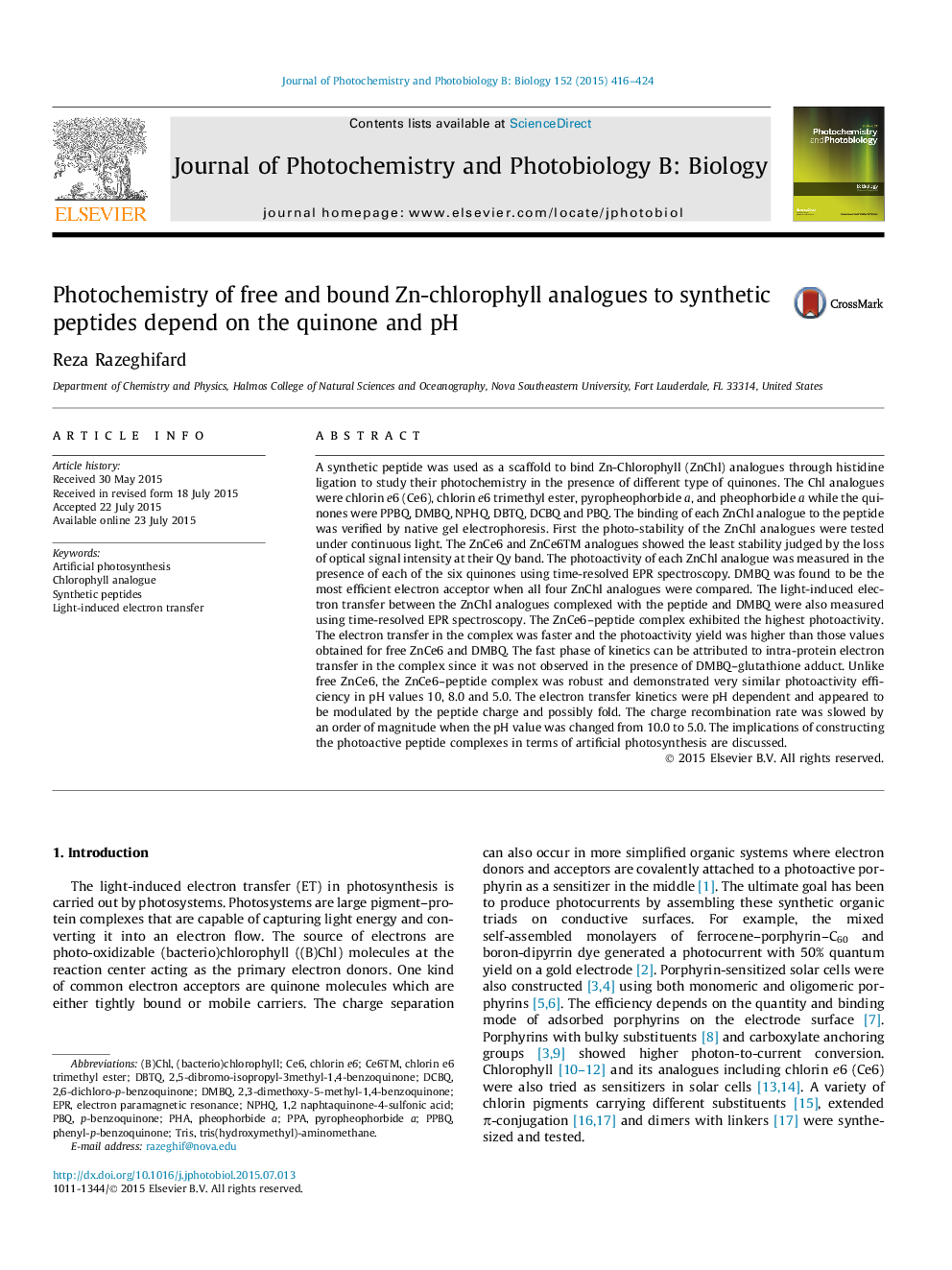| کد مقاله | کد نشریه | سال انتشار | مقاله انگلیسی | نسخه تمام متن |
|---|---|---|---|---|
| 29669 | 44427 | 2015 | 9 صفحه PDF | دانلود رایگان |

• Synthetic peptides can bind variety of chlorophyll analogues.
• Peptide-bound chlorophyll analogues are most photoactive in the presence of DMBQ.
• ZnChlorin e6-peptide complex exhibited the highest photoactivity.
• The peptide increases the photoactivity of bound ZnChlorin e6.
• Electron transfer kinetics between the bound ZnChlorin e6 and DMBQ are pH dependent.
A synthetic peptide was used as a scaffold to bind Zn-Chlorophyll (ZnChl) analogues through histidine ligation to study their photochemistry in the presence of different type of quinones. The Chl analogues were chlorin e6 (Ce6), chlorin e6 trimethyl ester, pyropheophorbide a, and pheophorbide a while the quinones were PPBQ, DMBQ, NPHQ, DBTQ, DCBQ and PBQ. The binding of each ZnChl analogue to the peptide was verified by native gel electrophoresis. First the photo-stability of the ZnChl analogues were tested under continuous light. The ZnCe6 and ZnCe6TM analogues showed the least stability judged by the loss of optical signal intensity at their Qy band. The photoactivity of each ZnChl analogue was measured in the presence of each of the six quinones using time-resolved EPR spectroscopy. DMBQ was found to be the most efficient electron acceptor when all four ZnChl analogues were compared. The light-induced electron transfer between the ZnChl analogues complexed with the peptide and DMBQ were also measured using time-resolved EPR spectroscopy. The ZnCe6–peptide complex exhibited the highest photoactivity. The electron transfer in the complex was faster and the photoactivity yield was higher than those values obtained for free ZnCe6 and DMBQ. The fast phase of kinetics can be attributed to intra-protein electron transfer in the complex since it was not observed in the presence of DMBQ–glutathione adduct. Unlike free ZnCe6, the ZnCe6–peptide complex was robust and demonstrated very similar photoactivity efficiency in pH values 10, 8.0 and 5.0. The electron transfer kinetics were pH dependent and appeared to be modulated by the peptide charge and possibly fold. The charge recombination rate was slowed by an order of magnitude when the pH value was changed from 10.0 to 5.0. The implications of constructing the photoactive peptide complexes in terms of artificial photosynthesis are discussed.
Journal: Journal of Photochemistry and Photobiology B: Biology - Volume 152, Part B, November 2015, Pages 416–424